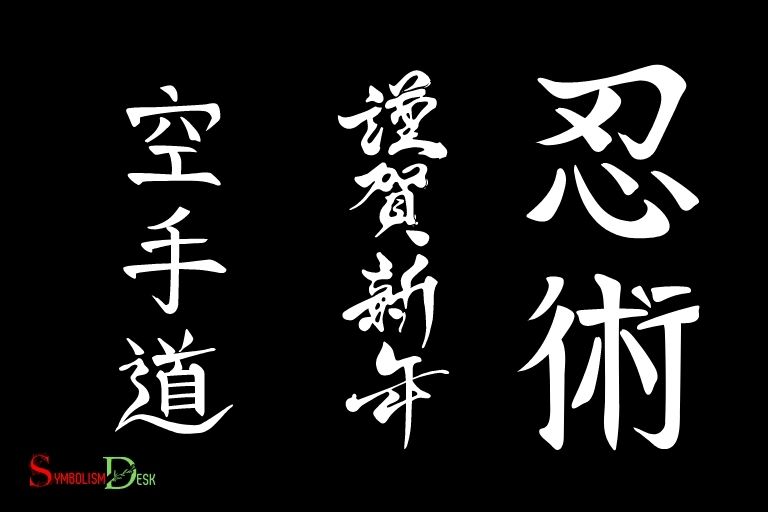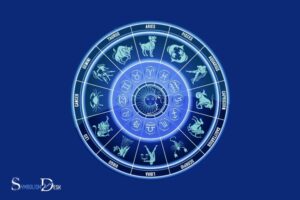How to Write My Name in Japanese Symbols? Easy Steps!
To write your name in Japanese symbols, you can use either Katakana or Hiragana scripts, which are phonetic and represent syllables.
Japanese language has three scripts: Kanji, Hiragana, and Katakana. Kanji represents ideas and is mainly used for Japanese words, whereas Hiragana and Katakana are phonetic scripts used for spelling foreign names.
Katakana is more commonly used for foreign names, while Hiragana is used for Japanese names and grammar.
To write your name in Japanese symbols, first, break down your name into syllables. Then, find the corresponding Japanese syllables in either Katakana or Hiragana.
For example, if your name is John, the syllables are ‘Jo’ and ‘n’. In Katakana, ‘Jo’ is ジョ and ‘n’ is ン, so your name would be ジョン.
Remember to practice writing the symbols to get familiar with them, and consider adding an honorific (like さん or サン) to make it more polite and culturally appropriate.
Write Your Name in Japanese Symbols
| Romanized Japanese | Hiragana | Katakana |
|---|---|---|
| A | あ | ア |
| I | い | イ |
| U | う | ウ |
| E | え | エ |
| O | お | オ |
| KA | か | カ |
| KI | き | キ |
| KU | く | ク |
| KE | け | ケ |
| KO | こ | コ |
| SA | さ | サ |
| SHI | し | シ |
| SU | す | ス |
| SE | せ | セ |
| SO | そ | ソ |
| TA | た | タ |
| CHI | ち | チ |
| TSU | つ | ツ |
| TE | て | テ |
| TO | と | ト |
| NA | な | ナ |
| NI | に | ニ |
| NU | ぬ | ヌ |
| NE | ね | ネ |
| NO | の | ノ |
| HA | は | ハ |
| HI | ひ | ヒ |
| FU | ふ | フ |
| HE | へ | ヘ |
| HO | ほ | ホ |
| MA | ま | マ |
| MI | み | ミ |
| MU | む | ム |
| ME | め | メ |
| MO | も | モ |
| YA | や | ヤ |
| YU | ゆ | ユ |
| YO | よ | ヨ |
| RA | ら | ラ |
| RI | り | リ |
| RU | る | ル |
| RE | れ | レ |
| RO | ろ | ロ |
| WA | わ | ワ |
| WO | を | ヲ |
| N | ん | ン |
Key Takeaway

Five Facts About Write My Name In Japanese Symbols
What Are Japanese Symbols?
Brief Introduction To Japanese Symbols
Japan is a country that is famous for having its own unique set of symbols and characters. In this blog post, we are going to explore japanese symbols and their importance in japanese culture.
If you’re wondering how to write your name in japanese symbols, then this article is for you!
Explanation Of Their Importance In Japanese Culture
Japanese symbols are an integral part of japanese culture, and they are used extensively in everyday life.
Here are some key points to consider:
Overview Of Different Types Of Japanese Symbols
There are three main types of japanese symbols:
Each symbol has its own meaning and significance, and learning how to write your name in japanese symbols can be a fun and rewarding experience.
Hopefully, this brief guide has given you some insight into japanese symbols and their importance in japanese culture.
If you plan on visiting japan or are just interested in learning more about this fascinating country, understanding japanese symbols is an essential part of the experience.
Understand The Japanese Writing System
Understanding The Japanese Writing System
Japanese is one of the most difficult languages to learn, particularly when it comes to writing. It has three writing systems in total, which can make it a daunting task to decipher japanese symbols.
One unique feature of the japanese writing system is that it combines two types of writing: kanji (chinese characters) and kana (japanese characters).
Understanding the difference between the two can significantly help write your name in japanese symbols. Here is a breakdown of the japanese writing system in detail.
Explanation Of The Japanese Writing System
The japanese writing system consists of three types of scripts, namely kanji, hiragana, and katakana. Each of these scripts is used in different contexts.
Introduction Of Hiragana And Katakana
Hiragana and katakana both play essential roles in the japanese writing system and may be used to write your name.
Here’s a detailed overview of each script.
Writing your name in japanese may feel daunting, but by understanding the japanese writing system, it becomes less confusing.
You can write your name in japanese using either hiragana or katakana depending on the structure of the name.
Choosing The Appropriate Symbol For Your Name
Overview Of How To Choose Appropriate Japanese Symbols For Your Name
If you want to write your name in japanese symbols, it is essential to choose the right one that fits your name’s sound.
Japanese uses a combination of syllables to create words, so unlike western languages, each symbol represents a particular sound.
Here are a few things to consider when choosing the appropriate japanese symbol for your name:
- Familiarize yourself with the different japanese phonemes
- Determine the correct pronunciation of your name
- Understand the different types of japanese writing systems
- Look for a matching symbol for every sound in your name
Explanation Of Different Japanese Sounds And How They Correspond To Different Symbols
Japanese has only five vowel sounds, and all japanese syllables end in a vowel sound. There are a total of 46 japanese phonemes, which are a combination of consonants and vowels.
Some of these phonemes do not exist in english, so learning their sounds can be a challenge.
Here are a few examples of japanese phonemes and their corresponding symbols:
- “a” sound: あ, か, さ, た, な, etc.
- “i” sound: い, き, し, ち, に, etc.
- “u” sound: う, く, す, つ, ぬ, etc.
- “e” sound: え, け, せ, て, ね, etc.
- “o” sound: お, こ, そ, と, の, etc.
Detailed Guidance On How To Match Each Sound In Your Name To The Appropriate Symbol
Here are the steps to write your name in japanese symbols:
- Determine the correct pronunciation of your name. If needed, check with a native japanese speaker or use a pronunciation guide online.
- Write down every sound of your name, breaking it down into its unique syllables.
- Find symbols that match each sound in your name.
- Look for the appropriate symbol for long vowels (double vowels), and add an extra “ー” symbol after the corresponding vowel. For example, the name “katie” would become “ケイティー.”
- If your name has a consonant cluster that doesn’t exist in japanese, use a small “tsu” symbol (っ) to represent the pause between the two consonants. For example, the name “brian” would become “ブライアン,” and “jessica” would become “ジェシッカ.”
By following these steps, you can write your name in japanese symbols accurately. Remember to choose the correct symbol for each sound of your name and consider using a pronunciation guide if you’re not sure how to pronounce it correctly.
Step 1: Write Your Name In Roman Letters
Explanation Of How To Write Your Name In Roman Letters
If you’re interested in learning how to write your name in japanese, you first need to write it in roman letters.
This is because japanese symbols are based on sounds, and roman letters are used to represent those sounds. Here’s how to write your name in roman letters:
- Start by writing your first name and last name separately.
- Use capital letters only for the first letter of the name.
- Do not include any titles or suffixes.
Tips For Spelling And Pronunciation
Once you’ve written your name in roman letters, it’s time to focus on spelling and pronunciation. Here are some tips to keep in mind:
- Pay attention to the order of the letters in your name. Japanese writing has a different order than english, so you may need to adjust the spelling to match.
- Be mindful of the sounds in your name. For example, the “th” sound in english doesn’t exist in japanese, so it may need to be replaced with a different sound.
- Practice pronouncing your name using a japanese accent. This will help you get a feel for how the sounds are different from english.
Writing your name in japanese symbols can be a fun and interesting way to connect with japanese culture.
By following these simple steps for writing your name in roman letters and paying attention to spelling and pronunciation, you can create a unique and personalized japanese symbol version of your name.
Step 2: Translate Your Name Into Japanese Sounds
Explanation Of How To Translate Your Name Into Japanese Sounds
Translating your name into japanese sounds might seem like a daunting task, but it doesn’t have to be. Here’s a simple guide on how to do it:
- First, check if your name has an equivalent in japanese. Many western names have been translated into japanese with a corresponding set of characters or symbols.
- If your name doesn’t have a direct translation, you can try to transliterate it instead. This involves matching the sounds of your name to the nearest equivalent sound in japanese.
- Keep in mind that japanese has a different set of sounds than english, so sometimes you’ll need to choose a sound that’s close enough to your name’s pronunciation.
- Lastly, it’s essential to double-check your transliteration because japanese symbols’ pronunciations can vary depending on their placement in a word.
Overview Of The Different Sounds In Japanese And How To Match Them To Your Name
Now that you know the basics of transliterating your name into japanese sounds, let’s look at the different sounds in japanese and how to match them to your name.
- Vowels: In japanese, there are five vowels, a, i, u, e, o. These sounds are pronounced consistently and have no variation.
- Consonants: Japanese consonants come in pairs with the exception of “n.” the consonant pairs are k/g, s/z, t/d, h/b/p. Other consonant sounds are “m,” “n,” and “r.”
- Choosing the right sound: To transliterate your name, you need to select the japanese sound that’s closest to the sound of your name. For example, if your name has a “th” sound, you can use “su” or “shi” for transliteration.
- Be mindful of stress and emphasis in your name because japanese is a syllabic language with equal emphasis for each syllable.
By following these tips, you can easily get your name translated into japanese sounds. Remember to practice its pronunciation to accurately convey it in written and spoken communication. Happy learning!
Step 3: Write Your Name In Hiragana
Now that you’ve learned the basics of hiragana, it’s time to write your own name. Here’s how you can do it:
Explanation Of How To Write Your Name In Hiragana
- Break your name down into syllables.
- Look up each syllable in a hiragana chart.
- Write each character with the correct stroke order.
- Write the characters vertically, from top to bottom, if you’re writing a traditional japanese-style.
Tips For Pronunciation And Stroke Order
To help you write your name in hiragana with ease, keep these tips in mind:
- Familiarize yourself with the correct pronunciation of each syllable. Japanese pronunciation can be tricky, so make sure you practice it a few times.
- Master the stroke order of each character. This will help you write each character more fluently and with precision.
- To make it simpler for you, here’s a great tip–you can just use a free online tool to convert your name to hiragana, in case you lack confidence in your hiragana writing skills.
Writing your name in hiragana is an excellent way of personalizing your japanese language study.
Following the above tips can make it fun and exciting instead of overwhelming. Give it a try and show off your newfound knowledge. Remember, practice is key, and you can master this with time and dedication.
Step 4: Write Your Name In Katakana
Explanation Of How To Write Your Name In Katakana
Writing your name in katakana can feel overwhelming at first, but it’s actually quite simple. Follow these steps:
- Find the sounds in your name: Breakdown your name into its individual sounds, using the japanese sound system. Use the katakana chart to find the corresponding katakana characters for each sound that you hear. If you have a middle name, you can use either your first or last name for your katakana name.
- Write your name in katakana: Once you’ve figured out the katakana characters for each sound, you can write your name in katakana. It’s important to strictly follow the stroke order of the katakana characters as it affects their readability.
- Check your work: Make sure that you’ve spelled your name correctly and double-check the stroke order of each character.
Explanation Of How Katakana Is Used In Japan
Katakana is one of the three writing systems in japan, along with hiragana and kanji. Unlike hiragana and kanji, katakana is used mainly for foreign loanwords and non-japanese names. It’s also used for onomatopoeic words and emphasis on certain words.
Japanese people are therefore familiar with seeing foreign words written in katakana.
Tips For Pronunciation And Stroke Order
Here are some important tips for pronunciation and stroke order when writing in katakana:
- Pronunciation: Each katakana character represents one phonetic sound, making it sound similar to your english name. However, japanese has a few sounds that may be tricky for english speakers. For example, the “r” sound in japanese is pronounced somewhere between an “r” and an “l” sound in english.
- Stroke order: Katakana characters must be written in a specific stroke order. This helps maintain readability and style. Start from the top left of each katakana character and move down and to the right in order, making sure to close any loops before moving on to the next stroke.
By following these steps, you can create a beautiful and accurate katakana representation of your name to use whenever you are in japan. Happy writing!
Kanji: Using Japanese Characters To Enhance Your Name
Are you fascinated by the intricacies of the japanese language and culture? Do you want a unique way to showcase your name or enhance your brand image? If yes, then writing your name with kanji characters might be the perfect solution for you.
Kanji is one of the three alphabets used in the japanese language and is characterized by its complex characters that carry multiple meanings.
In this blog post, we will discuss the importance of kanji characters in japanese culture and provide a step-by-step guide on how to write your name with kanji symbols.
Explanation Of Kanji And Their Significance In Japanese Culture
Kanji is a combination of characters that convey deep meaning and symbolism in the japanese language and culture.
These characters come from chinese characters and were introduced to japan several centuries ago.
Kanji characters carry multiple meanings and nuances, which can make them challenging to learn and use.
However, once you master them, you can add a layer of depth and complexity to your writing and speaking.
In japanese culture, kanji characters play a vital role in public and private life. From street signs to corporate logos, kanji characters are ubiquitous in japan. People even choose their names based on the kanji characters’ symbolism and meanings.
For example, the kanji character for “peace” is a popular choice for japanese names.
Kanji characters are also used in calligraphy and art, where they are appreciated for their aesthetic beauty and symbolism.
Overview Of How To Choose The Appropriate Kanji For Your Name
Choosing the right kanji character for your name can be a daunting task, given the complexity and nuance involved in each character.
However, with a little guidance and research, you can find the kanji symbol that best matches your personality, traits, and aspirations.
Here are some tips that can help you choose the appropriate kanji for your name:
- Research the meaning and symbolism of various kanji characters that match the sounds of your name.
- Consider your personality traits, values, and aspirations and match them with the kanji character’s symbolism and meaning.
- Consult a japanese native speaker or kanji expert to validate your choice and provide feedback.
Detailed Guidance On How To Match Each Sound In Your Name To The Appropriate Kanji
Now that you have chosen the appropriate kanji symbols for your name let’s move on to the next step, which is to match each sound in your name to the corresponding kanji character.
Here is a step-by-step guide:
- Break down your name into its individual sounds. For example, if your name is sarah, it contains three sounds: Sa-rah.
- Look up the hiragana or katakana equivalent of each sound. For example, sa is written as さ in hiragana or サ in katakana, and rah is written as ら in hiragana or ラ in katakana.
- Research kanji characters that match each hiragana or katakana sound. For example, the kanji character for “love” could match the “ra” sound in your name.
- Choose the kanji character that best represents the sound and the meaning you want to convey.
- Combine the chosen kanji symbols to form your unique name in kanji characters.
Writing your name with kanji characters is a fun and exciting way to showcase your personality and cultural interests.
By following the tips and guidance provided in this post, you can choose the appropriate kanji symbols and match them with the sounds in your name.
So, go ahead, grab a pen and paper, and start exploring the beautiful world of kanji characters.
FAQ On How To Write My Name In Japanese Symbols
How Do You Write Your Name In Japanese?
You can write your name in japanese by converting it into katakana symbols using a chart, as each symbol represents a syllable.
How Many Symbols Are There In The Japanese Alphabet?
There are 46 symbols in the japanese katakana alphabet, each symbol represents a syllable.
Can Japanese Symbols Represent All Names?
Not every name can be written in japanese symbols as the syllables used in local languages differ from the ones used in japanese.
What Do Japanese Symbols Represent?
Japanese symbols represent sounds that make up the japanese language, each symbol represents a syllable that can make up a word.
Can Different Symbols Be Used For The Same Sound?
Yes, some sounds can be represented by more than one symbol, usually with different pronunciations, depending on the word they are used in.
Conclusion
To sum up, writing your name in japanese symbols may seem like a daunting task, but it is actually quite simple once you understand the basics.
By learning the correct order of strokes and the meaning behind each character, you can create a beautiful representation of your name in a foreign language.
Remember to be patient and practice regularly to improve your skills. Additionally, it is essential to research and understand the cultural significance of the symbols to avoid any unintentional mistakes.
By following these guidelines and putting in the effort, you can have a unique and personal japanese symbol representation of your name.
Embrace the beauty and cultural significance of this ancient language and use it as a way to connect with others. Start practicing today and open up a world of possibilities!






